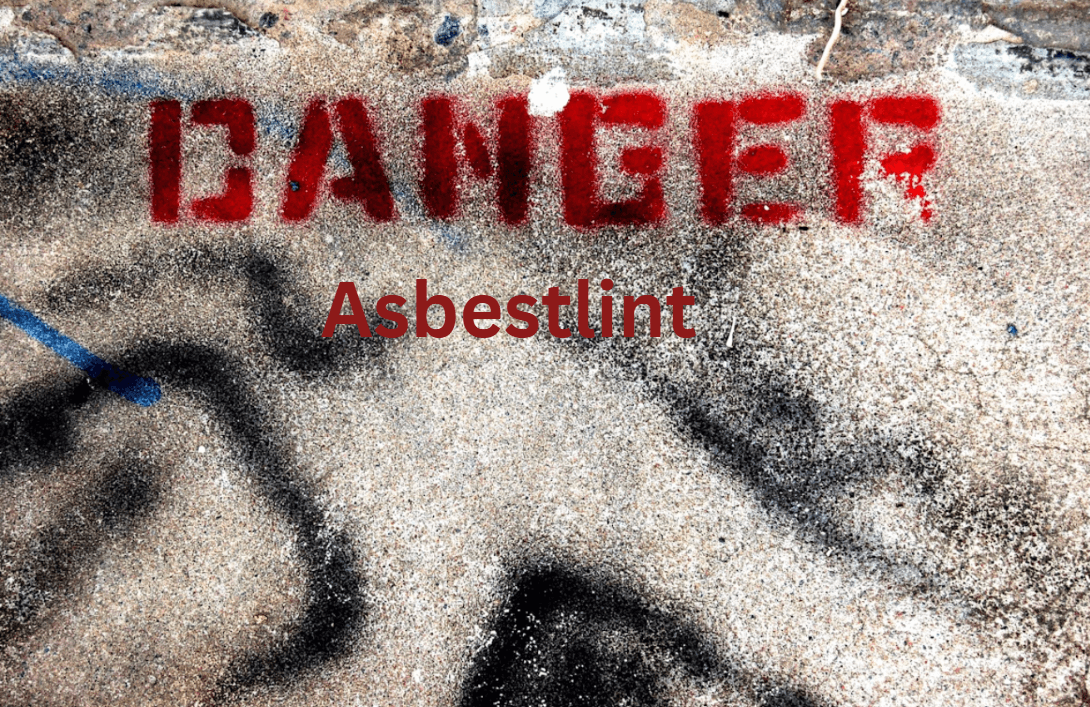Walk into an old textile factory, a basement boiler room, or even the backstage of a century-old theater, and you might notice a faint musty smell and a fine layer of dust on forgotten shelves. Most people brush it off — just “old building stuff.” But sometimes, what’s floating in the air isn’t ordinary dust at all. It’s something far more dangerous: asbestlint.
The word may not appear in every safety manual, but the hazard is real. Asbestlint is what happens when asbestos fibers — the same sharp, needle-like particles linked to deadly lung diseases — mingle with lint, the fluffy by-product of fabrics, insulation, and other fibrous materials. On their own, both can cause respiratory irritation. Together, they’re a potent, nearly invisible airborne cocktail.
What Exactly Is Asbestlint?
Picture a building from the 1960s. Its insulation, pipe wrappings, or floor tiles may contain asbestos. Over time, these materials age and release microscopic fibers into the air. Now imagine that same building also houses textile machinery, heavy curtains, or padded seating — all shedding tiny fabric fibers that make up lint.
In certain conditions, the two mix. Lint can cling to asbestos fibers, and the combined particles can float around, settle in vents, or get stirred up every time a door slams. Because lint is so common, its presence can mask the far more dangerous asbestos contamination.
That’s the tricky part — people often underestimate it because the threat is hiding inside something familiar.
Why It’s Dangerous
We already know the health risks of asbestos exposure:
- Asbestosis, a chronic lung condition that scars lung tissue.
- Mesothelioma, a rare but aggressive cancer of the lung lining.
- Lung cancer, often decades after the initial exposure.
Lint itself isn’t usually deadly, but it can still cause allergic reactions, trigger asthma, and carry chemical residues from fabrics. The real trouble begins when lint particles act as carriers for asbestos fibers, helping them travel deeper into the lungs than they might on their own.
Once inside the body, asbestos fibers never break down. Decades later, the damage they caused can show up as life-threatening illness.
Where Asbestlint Shows Up
The risk isn’t limited to factories or construction sites. Asbestlint has been found in:
- Textile mills and garment factories built before asbestos bans took effect.
- Shipyards, where older vessels used asbestos in insulation, and ropes or sails added lint to the air.
- Historic theaters and opera houses, with original curtains and soundproofing materials.
- Industrial laundries, especially those handling uniforms from facilities with asbestos.
- Renovation projects, where tearing down walls or ceilings stirs up both lint and asbestos dust.
In many of these environments, workers might notice a constant layer of lint on machinery or clothing but never suspect that some of those fibers are toxic.
Also Read: Is 2579xao6 Easy to Learn? Breaking Down the Reality
How You Detect It
The bad news? You can’t tell by looking. Asbestlint doesn’t wave a red flag or smell suspicious. The good news? Air quality testing can detect it before it becomes a bigger problem.
Specialists use:
- Phase Contrast Microscopy (PCM) for counting airborne fibers.
- Transmission Electron Microscopy (TEM) to confirm whether those fibers are asbestos.
- Lint analysis to see what’s stuck to the fibers.
In workplaces with a history of asbestos use, routine testing isn’t just smart — it’s a legal requirement in many countries.
Regulations and Safety Standards
Around the world, asbestos is subject to some of the strictest occupational safety rules. In the U.S., OSHA and the EPA set strict exposure limits and handling requirements. However, there’s no dedicated “asbestlint” standard — it falls under a mix of asbestos control and general dust safety guidelines.
For employers, that means tackling both hazards at once:
- Keeping asbestos exposure as close to zero as possible.
- Installing dust and lint control systems.
- Requiring proper PPE, including respirators and disposable coveralls.
- Training staff to spot potential hazards.
Dealing With Asbestlint Once It’s Found
If testing shows asbestlint contamination, the cleanup isn’t a matter of just vacuuming and calling it a day. Licensed asbestos abatement teams use a multi-step process:
- Seal off the area to prevent fibers from escaping.
- Use HEPA vacuums and wet-cleaning methods to trap particles instead of stirring them up.
- Remove the asbestos source entirely when possible.
- Upgrade lint filters in ventilation systems so it can’t carry fibers again.
Even something as simple as changing out a piece of asbestos insulation can release thousands of fibers — that’s why trained crews in protective suits handle it instead of maintenance staff.
Stopping the Problem Before It Starts
Prevention is always cheaper and safer than cleanup. For buildings still containing asbestos, that means:
- Scheduling regular inspections for damage or wear.
- Replacing asbestos-containing materials with safe alternatives.
- Maintaining high-quality ventilation with HEPA filters.
- Keeping lint-producing equipment clean and well-maintained.
Training is another big one. When workers understand what asbestos looks like, where lint comes from, and how the two can mix, they’re more likely to report suspicious dust early.
The Air You Breathe Matters
Indoor air quality often gets ignored unless there’s a visible problem — mold spots, strange smells, or clouds of dust. Asbestlint, unfortunately, doesn’t announce itself that way. That’s why some of the worst cases have been discovered only after workers started getting sick years down the line.
Think of it like carbon monoxide — invisible, odorless, and dangerous without a detector. In this case, the “detector” is regular environmental testing.
Stories That Stick
In the 1980s, a textile plant in the American South noticed an unusual spike in lung problems among employees. Testing revealed asbestos fibers hiding in the fluff that coated every surface. In another case, a historic theater was closed for renovations, only to have contractors discover that the “stage dust” was actually a mix of lint from decades-old costumes and asbestos from crumbling sound insulation.
These stories aren’t just cautionary tales — they’re proof that this isn’t an abstract hazard.
Looking Ahead
As more countries phase out asbestos and improve workplace ventilation standards, asbestlint will hopefully become rarer. New technology — from electrostatic air cleaners to lint-trapping filters that can handle microscopic particles — will help too.
But for now, awareness is the first line of defense. If you work in an older building with both fabric-heavy equipment and possible asbestos-containing materials, don’t ignore the dust. Ask questions. Request testing. Because once asbestos is in your lungs, there’s no getting it out.
Final Thoughts
Asbestlint might sound like a made-up word, but it names a real, dangerous problem. It’s what happens when the ordinary mess of daily work — lint from fabrics, insulation, or machinery — meets one of the most dangerous building materials in history.
By paying attention to both parts of the equation — and not underestimating the hazards that hide in the everyday — we can protect workers, preserve air quality, and make sure the dust in the air is just dust, not something far worse.




